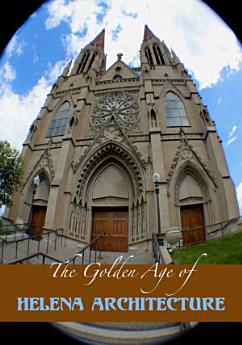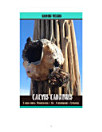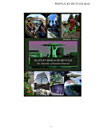About this ebook
Marques Vickers “The Golden Age of Helena Architecture” illustrates the preserved diversity and beauty of the city’s commercial, residential districts, picturesque churches, attractions and historical background that distinguishes Montana state capital city.
In 1888, approximately fifty millionaires inhabited Helena, elevating its status as the highest concentration of wealth per capita within the United States. Such eminence and prosperity were doomed by the characteristics of the source and by the continued expansion and development of the West.
The precious metal industry proved incapable of sustaining wealth stabilization. The volatile value fluctuations and its inherent boom and bust nature evaporated fortunes as rapidly as creating them.
The Golden era spawned ostentatious displays of Victorian architecture. Several were employed in a thriving local brothel industry, servicing the miners and more affluent community leaders. Strolling the neighborhoods connecting the historic downtown with the state capital buildings freezes a visual time capsule of Victorian, Edwardian and early twentieth century styled architecture.
The most impressive architectural attraction is the Cathedral of Saint Helena completed in November 1924 following sixteen years of construction. The gothic cathedral was modeled after the Votivkirch in Vienna, Austria. Fifty-nine installed stained glass windows depict the evolution of the Christian church from the fall of Adam and Eve to the early years of the twentieth century. Most portray narrative scenes from the Old and New Testament.
The most prominent structural feature is the 230-foot twin spires adorned by gold-leafed crosses standing 12 feet in height and 6 feet in length. The church’s North tower contains fifteen hand-cast bells representing the mysteries of the Rosary.
The other treasure, the Helena Civic Center, formerly known as the Algeria Shrine Temple, was constructed in 1919. It has been historically employed for civic and Shriner functions and events. The building features a 2,000-seat auditorium and 15,000 square foot ballroom and exhibition space. The temple rivals the detailing of any intricate Islamic Mosque.
Located south of the downtown, abandoned lime kilns stagger as relics from a forgotten medieval era. The Helena kilns were typified as continuous designed with vertical furnaces made of mortar, brick, wire cables and wood poles. The square-shaped kilns had openings from the top and base.
Alternative layers of wood fuel and quarried limestone cobbles were layered inside the kiln and fired at extreme temperatures. Wood and limestone were continuously fed into the top with the resulting powdery quicklime shoveled from the bottom mouth into wood barrels. At the peak of production during the early twentieth century, the most important use of lime was for building mortar and plaster. Artificial hydraulic cement eventually displaced quicklime.
Helena has experienced significant trauma and devastation throughout its history. The most pronounced acts have been raging wildfires and earthquakes. Bearing witness to each destructive occurrence and renovation has been a solitary sentinel overlooking the historical center of the city. The wood-frame observation tower is called The Guardian of the Gulch, originally constructed in 1870 and rebuilt in 1886.
The Guardian has borne witnessed to a city that has known extravagance and decline and today remains notably preserved of its renowned golden age.
About the author
Author, photographer and visual artist Marques Vickers was born in 1957 in Vallejo, California. He graduated from Azusa Pacific University in Los Angeles and became the Public Relations and Executive Director for the Burbank, California Chamber of Commerce between 1979-84.
Professionally, he has operated travel, apparel, wine, rare book and publishing businesses. His paintings and sculptures have been exhibited in art galleries, private collections and museums in the United States and Europe. He has previously lived in the Burgundy and Languedoc regions of France and currently lives in the South Puget Sound region of Western Washington.
He has written and published over one hundred books spanning a diverse variety of subjects including true crime, international travel, social satire, wine production, architecture, history, fiction, auctions, fine art, poetry and photojournalism.
He has two daughters, Charline and Caroline who reside in Europe.




